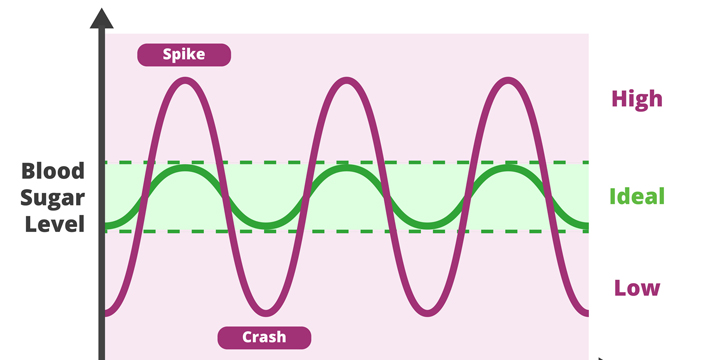
Keeping your blood sugar levels in their target ranges is very important. When blood sugar levels drop too low, this results in hypoglycemia, which can make you feel light-headed, nauseous and unable to concentrate. Very low blood sugar levels (severe hypoglycemia) can make you feel confused and disoriented, and you could even lose consciousness.
Blood sugar levels that are consistently too high cause hyperglycemia, which can lead to a number of complications, including heart disease, eye disease, kidney disease and nerve disease.
That’s why it’s important to know your target blood sugar ranges and stay within them.
Blood glucose targets for people with diabetes
The recommended targets for most people with diabetes are as follows:
- Fasting blood glucose / blood glucose before a meal: 4.0 to 7.0 mmol/L
- Blood glucose two hours after eating a meal: 5.0 to 10.0 mmol/L (or 5.0 to 8.0 mmol/L if your A1C targets are not being met)
Blood glucose targets can differ in some special populations, including children, pregnant women and elderly people.
Blood glucose targets during pregnancy
The recommended targets during pregnancy – whether you have type 1 or type 2 diabetes, or gestational diabetes – are as follows:
- Fasting blood glucose / blood glucose before a meal: <5.3 mmol/L
- One hour after a meal: less than 7.8 mmol/L
- Two hours after a meal: less than 6.7 mmol/L
Learn more about managing diabetes that occurs during pregnancy and managing diabetes when you become pregnant.
Blood glucose targets in elderly people
The recommended targets for the elderly (people who are over 65 years old) are the same as for the general population. However, the Diabetes Canada clinical practice guidelines were recently updated to recommend different blood glucose targets in the “frail elderly.” These are senior citizens who have three or more of the following conditions:
- Unintended weight loss (more than 10 pounds during the past year)
- Constant fatigue or exhaustion
- Weakness in their arms and legs
- A slow walking speed
- Low physical activity
The recommended target for frail elderly people is as follows:
- Fasting blood glucose / blood glucose before a meal: 5.0 to 12.0 mmol/L
Learn more about blood glucose targets for elderly people with type 2 diabetes.
Blood glucose targets in babies and children
The recommended fasting blood glucose targets for babies and children up to 12 years old are as follows:
- Less than 6 years old: 6.0 to 10.0 mmol/L
- 6 to 12 years old: 4.0 to 10.0 mmol/L
How to test?
A blood glucose meter is used to check your blood glucose at home. You can purchase a meter at most pharmacies. Talk with your healthcare team or pharmacist about which meter is best for your needs. Once you receive a meter, ensure you receive the proper training before you begin to use it. Ask your healthcare provider about:
- How and where to draw blood
- How to use and dispose of lancets (the device that pierces your skin)
- How much blood is needed to test
- The type of blood glucose strips that should be used
- How to clean the meter
- How to check if the meter is accurate
If you have diabetes, it’s important that you keep your blood glucose as close to target range as possible. This will help to delay or prevent complications of diabetes. Maintaining healthy eating habits and an active lifestyle, and taking your medications as prescribed, will help you keep your blood glucose levels within their target range.


